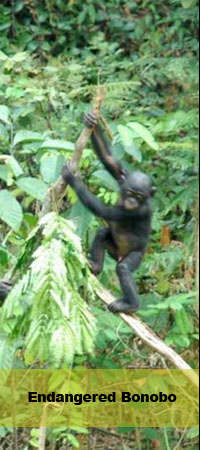|
The bonobo (Pan paniscus) is an endangered primate endemic to the Democratic Republic of Congo. Its vital habitat includes the dense, equatorial forests south of the Congo River. Its historic range is estimated to have been around 565,000 km2, but the species is now severely threatened, particularly by poaching and the commercial bushmeat trade.
The bonobo inhabits primary and secondary forests, but also mosaic forest with savannas including other habitats such as swamp forests. Bonobo is both terrestrial and arboreal. In overall size, bonobo are similar to chimpanzee. Its weight is about 40 kg for male and 31 kg for female. Bonobos have not traditionally been acknowledged for their use of tools, but they have been noted to self-medicate by leaf swallowing during the peak occurrence of intestinal parasites. Females do not produce their first infant before 13–15 years old.Bonobos are highly social animals, living in large communities of up to 120 individuals. Fruits constitue the bulk of the bonobo's diet but seeds, leaves, flowers and invertebrates are also eaten.
Current knowledge of the status of bonobos is incomplete since recent bonobo surveys cover less than 30% of their historical range.Quantitative data are therefore too uneven to estimate the total number of bonobos remaining in the wild.More than 54% (83,760 km2) of the area predicted to be suitable for bonobos has not been surveyed. However, past surveys that have been conducted give a minimum population of about 15,000–20,000 individuals.
What are the threats to bonobos?
Commercial poaching, which the most serious threat to bonobos across their range. Despite being a fully-protected species under the Democratic Republic of Congo law, bonobos are killed, traded and consumed in many parts of their range. Bonobos are even illegally hunted in Salonga National Park. Habitat (mostly forest) loss, both in terms of habitat destruction and fragmentation. Preserving remaining habitat is vital for bonobos. Disease transmission, a potential concern that could wipe out some populations.
For effective protection of bonobos, commercial poaching must be stopped, intensification rather than expansion of local agriculture must be supported, and local communities must be actively persuaded to support conservationin conjunction of adequate law enforcement. Additional surveys are needed to better determine the species’ overall distribution and abundance. Finally, protecting bonobos within existing protected areas must be intensified with appropriate resources allocated to that end.
Endangered Species International (ESI) works hard on many fronts to save endangered primates in their habitats. ESI has active field projects to save several species of primate from the smallest ones (tarsier) to the biggest (gorilla). ESI is a member of the Great Apes Survival Partnership (GRASP). GRASP is a unique alliance to save great apes between countries, the United Nations institutions, conservation non-governmental organizations (NGOs) and private sector institutions. Join us! to save endangered primates. Your support is the backbone of our invaluable efforts.
Links
|
|
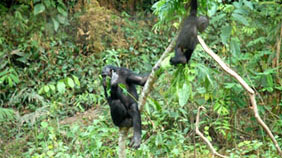
A young bonobo and its mother. © Endangered Species International
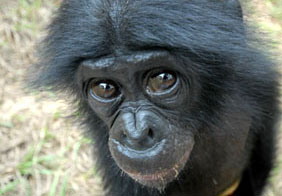
A young bonobo. © Endangered Species International
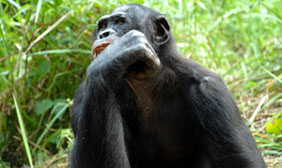 A minimum of 15,000–20,000 individuals remain in the wild. © Endangered Species International A minimum of 15,000–20,000 individuals remain in the wild. © Endangered Species International
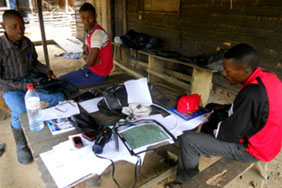 ESI Congo team protecting great apes in the field. © Endangered Species International ESI Congo team protecting great apes in the field. © Endangered Species International
 Habitat of bonobos. © Endangered Species International Habitat of bonobos. © Endangered Species International
|

